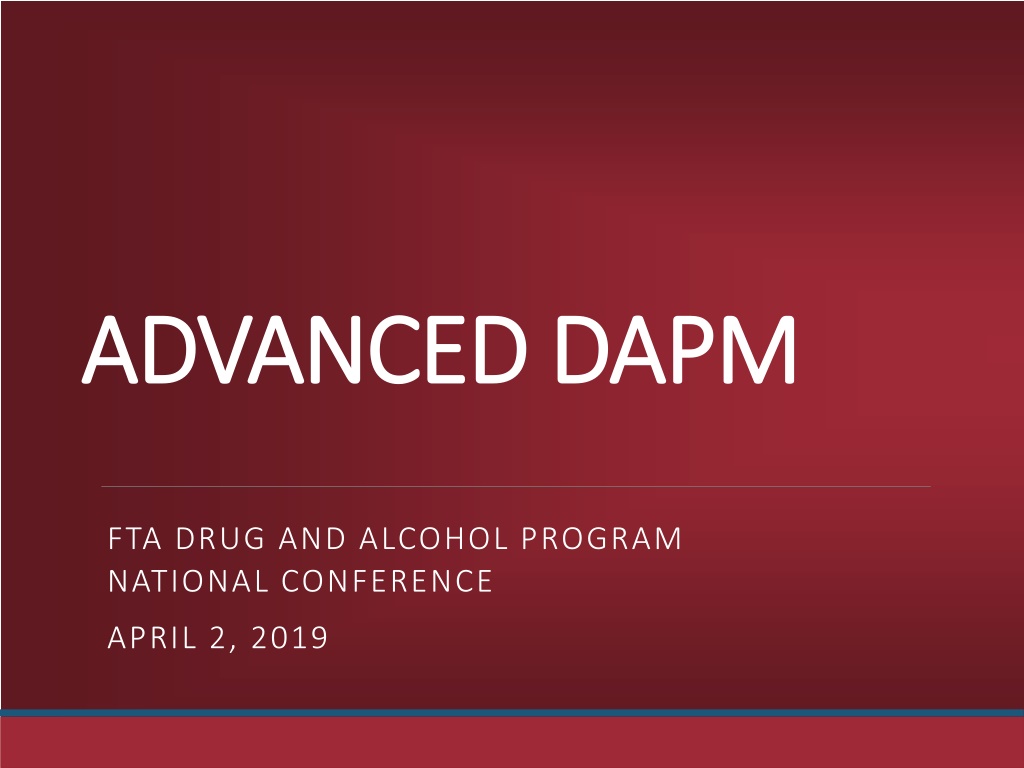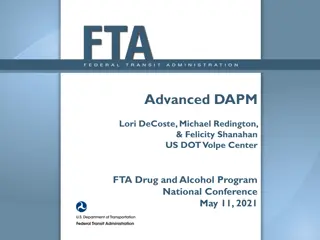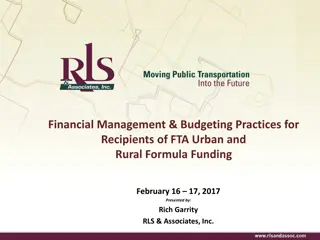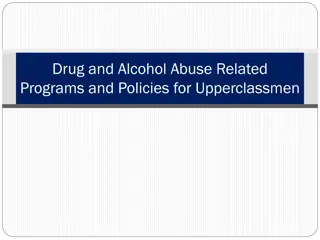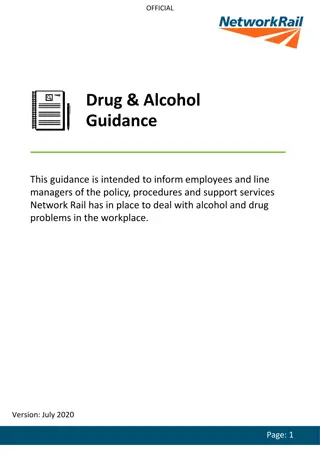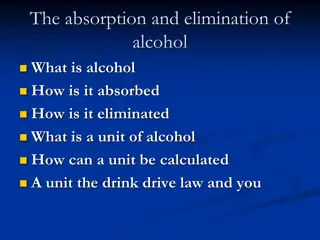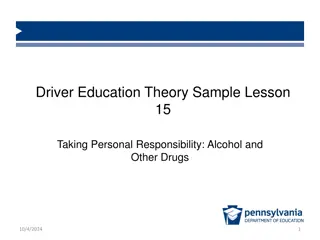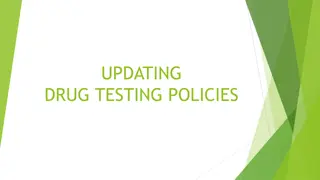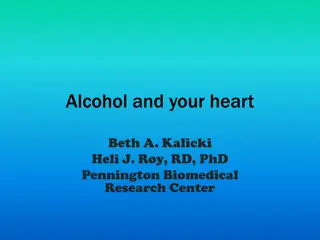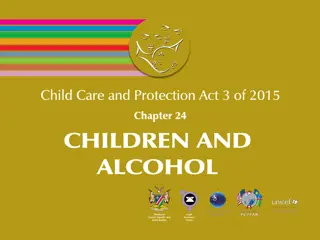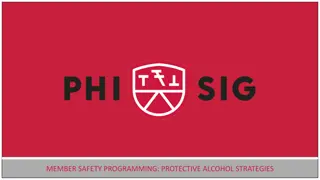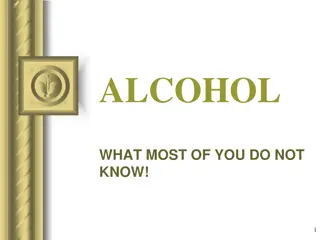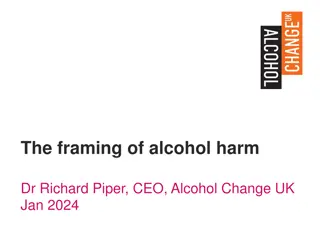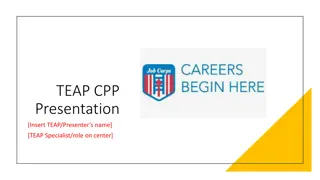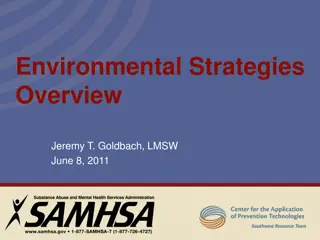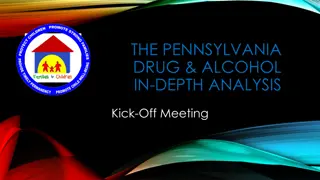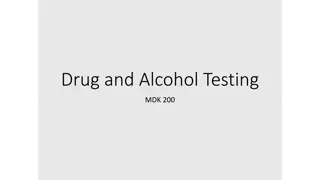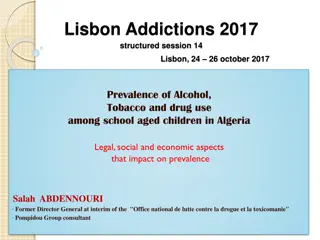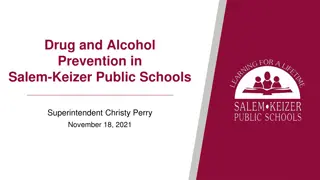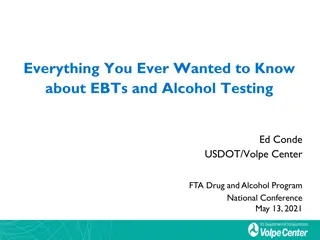FTA Drug and Alcohol Program: Advanced DAPM National Conference
Explore the guidelines and procedures for the FTA Drug and Alcohol Program discussed at the Advanced DAPM National Conference held on April 2, 2019. Learn about calculating covered employees, random testing rates, and reporting test results efficiently. Gain insights into managing drug and alcohol testing requirements for FTA-covered employees and contractors. Stay compliant with strict testing regulations and ensure a safe work environment.
Download Presentation

Please find below an Image/Link to download the presentation.
The content on the website is provided AS IS for your information and personal use only. It may not be sold, licensed, or shared on other websites without obtaining consent from the author. Download presentation by click this link. If you encounter any issues during the download, it is possible that the publisher has removed the file from their server.
E N D
Presentation Transcript
ADVANCED DAPM ADVANCED DAPM FTA DRUG AND ALCOHOL PROGRAM NATIONAL CONFERENCE APRIL 2, 2019
Speakers FTA D&A Project Office (USDOT/Volpe Center) Lori DeCoste lori.decoste@dot.gov, 617-494-2379 Michael Redington michael.redington@dot.gov, 617-494-2197 Felicity Shanahan felicity.shanahan@dot.gov, 617-494-3915 2
MIS Covered Employees How to Calculate Total Number of Employees in All Categories Average number of your FTA-covered employees in the random testing pool(s) at the time of each random selection Example (using quarterly selections): Q1: 56 Q2: 60 (56 + 60 + 63 + 61) / 4 Q3: 63 240 total employees / 4 quarters = 60 total covered employees Q4: 61 3
MIS Covered Employees How to Calculate Contractor begins mid-year (e.g., July 1) Example (using quarterly selections): Q3: 63 (63 + 61) = 124 Q4: 61 124 total employees / 2 quarters = 62 total covered employees Work Stoppage/Seasonal (e.g. limited service April 1 June 30) Example (using quarterly selections): Q1: 60 Q2: 8 (60 + 8 + 63 + 61) = 192 Q3: 63 192 total employees / 4 quarters = 48 total covered employees Q4: 61 4
FTA Random Testing Rates Minimum random testing rates: drugs = 50%, alcohol = 10% 50% and 10% of total number of covered employees (usually see next slide) If random pool includes multiple FTA-covered employers Pool must select enough to meet 50% / 10% requirements Each employer not required to meet testing rates If random pool includes employees/employers covered by multiple DOT modes (e.g., FTA and FMCSA) Pool must select enough to meet highest minimum rate (i.e., FTA) 5
FTA Random Testing Rates Contractor begins mid-year (July 1) How many tests? Example (using quarterly selections): Q3: 63 (63 + 61) = 124 Q4: 61 124 total employees / 2 quarters = 62 total covered employees 62 covered employees x 0.5 year = 31 50% of 31 = 15.5 = 16 random drug tests 10% of 31 = 3.1 = 4 random alcohol tests Must round up! 6
MIS Reporting Test Results Report only FTA test results to FTA If random pool includes non-FTA, do not report non-FTA Do not report non-DOT tests MIS is employer-based Do not include contractors on grantee MIS report Corporate Contractors Report testing results associated with individual contract (FTA grantee) Do not report corporate-wide results 7
MIS Reporting Test Results What do you report when A DOT form is used for a non-DOT test? The collector marks the wrong test type on the CCF? An applicant takes a pre-employment test, but is not hired? 8
Safety-Sensitive - Sometimes Employee could, might , may perform safety-sensitive function: Operates only when several operators are on sick and on vacation Operates only once a year special event Operates only in an emergency Must employee be in random pool subject to DOT/FTA testing? Can you add in and pull out of random pool on a regular basis? Safety-sensitive determined by job function, not job title 9
Safety-Sensitive - Supervisors Supervising safety-sensitive functions is not a safety-sensitive function Must actually perform a safety-sensitive function How do you report on MIS? 10
Post-Accident Decision Making Scenario #1: Operator in hospital hospital does not allow tests Can you test when released? Operator went home? Scenario #2: Operator does not report accident disabling damage and goes home Is this a refusal? Scenario #3: Operator escorting paratransit passenger from doorstep passenger falls and is transported to the hospital Do you test? 11
Post-Accident Decision Making Scenario #4: Manager thinks operator was discounted for improper reasons by on-scene supervisor Can manager overturn decision by on-scene supervisor? Scenario #5: Police provide direction to test the operator Do you test? Scenario #6: Accident occurs 200 miles away Must supervisor go to scene? 12
Waiting For Test Results What does FTA require you to do when Employee sent for Reasonable Suspicion drug test Awaiting Result Employee sent for Post-Accident Drug Awaiting Result Shy Bladder or Shy Lung Evaluation Awaiting Outcome 13
Test Refusals Who has the final say? MRO Evaluating Physician (shy lung) Employer After Review of Collector/BAT/STT documentation Employer may differ from Collector, BAT, STT must document Urine Collector, BAT, STT do not make refusal determinations 14
Employee Prescriptions What does FTA require you to do when Employee reports they have been prescribed OxyContin? 15
CDL Physicals & Drug Testing DOT physical exams (CMVs) do not require drug tests Urinalysis is for metabolic testing (e.g. glucose) Medical Certificate Renewal Any drug testing must be non-DOT 16
Pre-Employment Refusals PE Drug Test Begins When Donor Accepts or Selects Specimen Cup Donor Unable to Refuse Prior to that NOT a Refusal Donor will not select or accept cup Donor does not go to collection site Donor does not arrive at scheduled time Donor does not provide identification at collection site Donor admits to illegal drug use in interview 2018 MIS* Other Refusals Pre-Employment Other PE Drug Refusals 111,031 Drug Tests 714 Random Other Random Drug Refusals *MIS Data as of 3/18/19 91,037 Drug Tests 167 17
Previous Employer Discover current employee had DOT positive/refusal with a previous employer Check if compliant with SAP evaluation, follow-up testing program If not Pull employee What if discovery is after more than two years? Discover previous employee, with positive DOT result, is performing safety-sensitive elsewhere? Contact FTA Drug and Alcohol Program Manager (Iyon Rosario) 18
Positives/Refusals - Arbitration Arbitrators may overturn the discipline (termination) following a refusal or positive test result, but not the test result Remains a DOT positive/refusal result Employee must still: Be referred to SAP Successfully complete return-to-duty process Take return-to-duty test(s) with negative result Be subject to follow-up testing Still report positive/refusal on MIS report 19
Follow-up Testing DAPM Did Not Follow the Plan Scenario #1: SAP required both drug and alcohol testing, DAPM only conducted drug testing Scenario #2: SAP required drug testing only, DAPM conducted both drug and alcohol testing Scenario #3: SAP required 8 tests in first year, DAPM only conducted 6 tests 20
Alcohol Testing - When? Pre-employment (optional) After making a contingent job offer Must be DOT test Must test all safety-sensitive applicants/transferees Random During, just before, and just after performance of safety- sensitive function Post-accident As soon as practicable following an accident 21
Alcohol Testing - When? Reasonable suspicion During, just before, and just after the performance of safety-sensitive function Observations must be made during, just before and just after performance of safety-sensitive function Return-to-duty after SAP has determined compliance (and has required RTD alcohol testing) Follow-up During, just before and just after the performance of safety-sensitive function What if not performing a safety-sensitive function? 22
Collection Site Wait Times What are your responsibilities/options? Example to section 40.61(b)(1) states: Collectors and BATs should work together, however, to ensure that post- accident and reasonable suspicion alcohol tests happen as soon as possible (e.g., by moving the employee to the head of the line for alcohol tests). Post-Accident Testing Documentation Requirements 2 hours from accident to alcohol test not 2 hours from accident to arrival at collection site 23
Collection Site Restrictions Unavailable After Hours Must test at all hours that safety-sensitive functions are performed Random testing Post-accident testing Reasonable suspicion testing Follow-up testing Hospitals Collectors and BATs must be DOT-qualified 24
Cancelled Tests Shy Bladder Shy bladder with temporary medical explanation Not a refusal What does FTA require you to do? Pre-Employment Test Random Tests Follow-Up Tests 25
Access to D&A RECORDS 655.73(i): employer may disclose drug and alcohol testing information required to be maintained under this part, pertaining to a covered employee, to the State oversight agency or grantee required to certify to FTA compliance with the drug and alcohol testing procedures of 49 CFR parts 40 and 655 Contractors/subrecipients must release D&A records to FTA Grantee upon request Includes subcontractors and independent contractors (taxicab) Do all departments of employer (Risk, HR, Legal, Operations, Accounting, Safety, etc.) have access? 26
Questions? Contact Us FTA Drug and Alcohol Hotline: 617-494-6336 or fta.damis@dot.gov Lori DeCoste, lori.decoste@dot.gov, 617-494-2379 Michael Redington, michael.redington@dot.gov, 617-494-2197 Felicity Shanahan, felicity.shanahan@dot.gov, 617-494-3915 27
